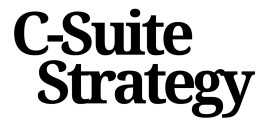
Understanding Strategic Alignment
At the heart of effective business leadership is the principle of strategic alignment. It involves ensuring that all aspects of a company, from its culture to its goals, work cohesively with its overarching strategy. This alignment doesn't merely mean having everyone on the same page; it extends to aligning company culture and values with strategic objectives. This creates a coherent direction that propels an organization towards long-term success.
Effective strategic alignment starts with a comprehensive understanding of the business's objectives and the environments in which it operates. The planning process to achieve this must involve a meticulous examination of the organization's existing culture, resources, and its competitive landscape. As these elements are evaluated, they form the foundation for a successful strategic plan.
Facilitating Successful Strategy Sessions
For strategic alignment to be more than just a vision, an effective strategy meeting is essential. Picking the right participants who can influence decision-making is important. They are tasked with evaluating data and shaping the planning agenda to enhance the organization’s strategic objectives. To maximize meeting effectiveness, it's crucial to have clear planning facilitation. Proper agenda setting, with ground rules, ensures meetings are productive and inclusive.
In strategic sessions, the leadership team should foster an environment where every team member feels empowered to contribute to the discussion. This open atmosphere allows for diverse perspectives that enrich the strategic plan.
The Importance of Planning and Data
Planning meetings serve as the cornerstone for gathering insights and setting the strategic direction. They are the moment when data is transformed into actionable items. By leveraging data and analytics, leaders can gain a clear view of the business landscape and make informed, strategic decisions. This data-driven approach strengthens the strategic alignment, ensuring that the strategy is not just theoretical but grounded in reality.
With these practices, strategy becomes a living process that adapts to change, setting the stage for long-term organizational success.
The Role of C-Suite in Strategy Sessions
Empowering Leadership in Strategic Sessions
In the realm of strategic alignment, the role of the C-Suite is both pivotal and transformational. Effective strategy sessions hinge significantly on the input and direction provided by senior leadership. Thus, for any strategic planning or strategy meeting to achieve its objectives, the involvement of the C-Suite is indispensable.
The leadership team's presence in these sessions serves multiple purposes. Firstly, it sets a definitive tone for the session, emphasizing to all participants the significance of the meeting. When leaders actively engage in strategy meetings, it sends a clear message across the organization: strategic planning is a top-tier priority.
These meetings also offer a prime opportunity for leadership to articulate the organization’s overarching goals and ensure they align harmoniously with the strategic plan. Setting these ground rules and providing a clear meeting agenda paves the way for successful strategy sessions. It ensures that time is used efficiently, allowing teams to delve deep into planning mechanisms and explore strategic risks and opportunities.
The C-Suite can foster an environment where strategic planning is not only about high-level goals but also about actionable items. Participants are more likely to be engaged when they see leaders actively participating in the process. It's crucial for strategic planning to translate into real-world outcomes, a goal often facilitated by leadership aligning strategy with the organization's culture and values.
This leadership-driven facilitation ensures a comprehensive strategy review process, where the planning sessions are methodically structured to pack the most impact into a single day. Empowered by guidance and grounded objectives, teams can navigate the complexity of decision making with more confidence and clarity.
Moreover, when strategic alignment is combined with leadership's deep insights and understanding, it empowers participants to make data-driven decisions. This becomes an essential component not only of the current planning session but also in maintaining alignment in long-term strategic goals. For more insights on how leadership can embrace strategic transformation towards business success, you may find it valuable to explore this resource.
Key Components of a Successful Strategy Session
Crafting a Practical and Effective Foundation
To foster a successful strategy session, it's crucial to establish a practical and effective foundation through meticulous planning. Begin by explicitly defining the meeting agenda to guide participants through the strategic discussions. An agenda serves as a navigational tool, ensuring that all pivotal topics are covered within the allocated time. It can be beneficial to distribute this agenda in advance to allow participants to prepare, resulting in more productive and engaging strategy meetings. Additionally, setting clear goals and objectives for the session is vital. These objectives should align with the organization's long-term strategic plan, providing a roadmap for the day's discussions. Transparent communication of these goals helps keep your team focused and motivated throughout the session. The leadership team plays a crucial role in facilitating effective planning meetings. By establishing ground rules at the beginning of the session, you create an environment conducive to open dialogue and collaborative problem-solving. Encouraging everyone to voice their insights while maintaining a respectful and professional tone can significantly enhance the quality of strategic discussions. Incorporating data-driven insights further strengthens the planning process. Leveraging data in strategy meetings allows decision makers to ground their conversations in concrete evidence, helping to clarify complex issues and propose informed solutions. This approach fosters a more objective view of potential challenges and opportunities. To ensure a seamless flow, designate specific time slots for each agenda item and adhere to them rigorously. This time management discipline helps prevent discussions from veering off track, thus making the agenda a dynamic tool for achieving intended outcomes. Finally, it's essential to capture actionable items at the end of each topic. Clearly documenting these action items ensures accountability, as each participant understands their role in executing the strategic plan. This sets the stage for post-session activities and keeps the momentum going long after the strategy meeting concludes. For more insights into elevating business performance, explore techniques for strategic improvement that delve deeper into optimizing strategic planning processes.Aligning Company Culture with Strategy
Infusing Organizational Culture with Strategic Objectives
Achieving seamless alignment between company culture and strategic goals is a vital endeavor for any organization. A well-defined strategy alone doesn't guarantee success; it must resonate with the culture to be effective. During strategic planning, it is important to ensure that every participant understands the core values of the organization and how these values can drive objectives forward. Creating this alignment begins with the participants. When planning a strategy meeting, select team members who are not only aware of the company's culture but who also embody it. This ensures that decisions made reflect the cultural ethos of the organization, supporting long-term business objectives. Incorporating cultural alignment into the agenda of a strategy session helps clarify how current cultural practices support or hinder strategic initiatives. Ground rules should be established to consider cultural aspects throughout the planning process, ensuring alignment is maintained in both planning sessions and daily operations. Key to this process is open communication. Encourage participants to voice how they perceive the alignment or misalignment of an organization's culture and strategic goals. This collaborative approach assures a more comprehensive understanding of factors influencing decision making. The strategy meeting should also allocate time for culture-specific brainstorming. Allow the team to explore ideas that can reinforce the synergy between culture and strategic objectives. These sessions help identify opportunities for cultural development as part of the strategic plan. Action items emerging from such discussions may include adjustments to organizational processes or initiatives that promote cultural growth aligned with strategic goals. Finally, define clear metrics to measure the impact of cultural alignment within the strategy. Whether it's improved employee engagement, better decision making, or efficient execution of plans, these metrics help in assessing if the alignment initiatives are yielding desired results. The focus on culture during strategy meetings also sets a clear path for participants to follow, ensuring everyone is moving towards shared goals.Leveraging Data for Strategic Decisions
Harnessing the Power of Data in Strategic Decision Making
In today's data-driven world, leveraging data effectively is crucial for any organization aiming to achieve strategic alignment. Data acts as a compass, guiding the leadership team through the complex landscape of business planning and strategic decision making. It's not just about collecting data; it's about utilizing it to inform and enhance the strategic planning process.
During strategy meetings, the participants should come prepared with relevant data that can inform the meeting agenda and support the strategic goals of the organization. This preparation ensures that the planning sessions are grounded in reality, allowing the team to make informed decisions that will drive the business forward.
- Set Clear Data Objectives: Before the planning meeting, identify what data is necessary to support the strategic plan. This includes both quantitative and qualitative data that can provide insights into market trends, customer behavior, and internal performance metrics.
- Integrate Data into the Planning Process: Use data to validate assumptions and test the feasibility of strategic initiatives. This helps to align the company culture with the strategic objectives by ensuring everyone is on the same page regarding the organization's direction.
- Ensure Data Accessibility: Make sure that the data is accessible to all participants during the strategy session. This transparency fosters a collaborative environment where everyone can contribute to the decision-making process.
- Utilize Data for Continuous Improvement: Post-strategy session, use data to measure the impact of strategic alignment. This ongoing evaluation helps to refine strategies and adjust plans as needed, ensuring long-term success.
By embedding data into the strategic planning process, organizations can enhance their decision-making capabilities, ensuring that every strategy meeting is not just a discussion, but a step towards achieving actionable and measurable outcomes.
Measuring the Impact of Strategic Alignment
Evaluating the Real-World Impact
To truly assess the effectiveness of strategic alignment in your organization, it’s vital to measure its impact meticulously. A successful strategy meeting doesn’t just end when participants leave the room. Instead, it extends into rigorous evaluation and monitoring. Here’s how you can ensure that your strategic plans translate into tangible results:- Define Clear Metrics: During the planning sessions, establish clear and concise metrics that align with the organization’s goals. These metrics should guide the strategy, meeting different facets of the business.
- Regular Strategy Reviews: After the sessions, it’s essential for the leadership team to engage in periodic strategy reviews. These reviews as part of a systematic process help in understanding whether the strategic planning agenda and action items are being executed effectively within the ground rules established.
- Leverage Data and Analytics: Utilize comprehensive data analysis to track progress. Access reliable data during each planning session to make informed decisions and refine your strategic plan as needed.
- Feedback Mechanisms: Encourage feedback from all team members involved in strategy sessions. This inclusive approach ensures that different perspectives are considered, leading to better decision making.
- Adapt and Adjust: Be prepared to adapt your goals and plans according to the feedback and data insights. This flexibility allows the organization to stay resilient in volatile business environments.
- Communicate Outcomes: Transparently communicate the outcomes of these evaluations with relevant team members and stakeholders. This promotes accountability and ensures that everyone is aligned with the strategic direction.














